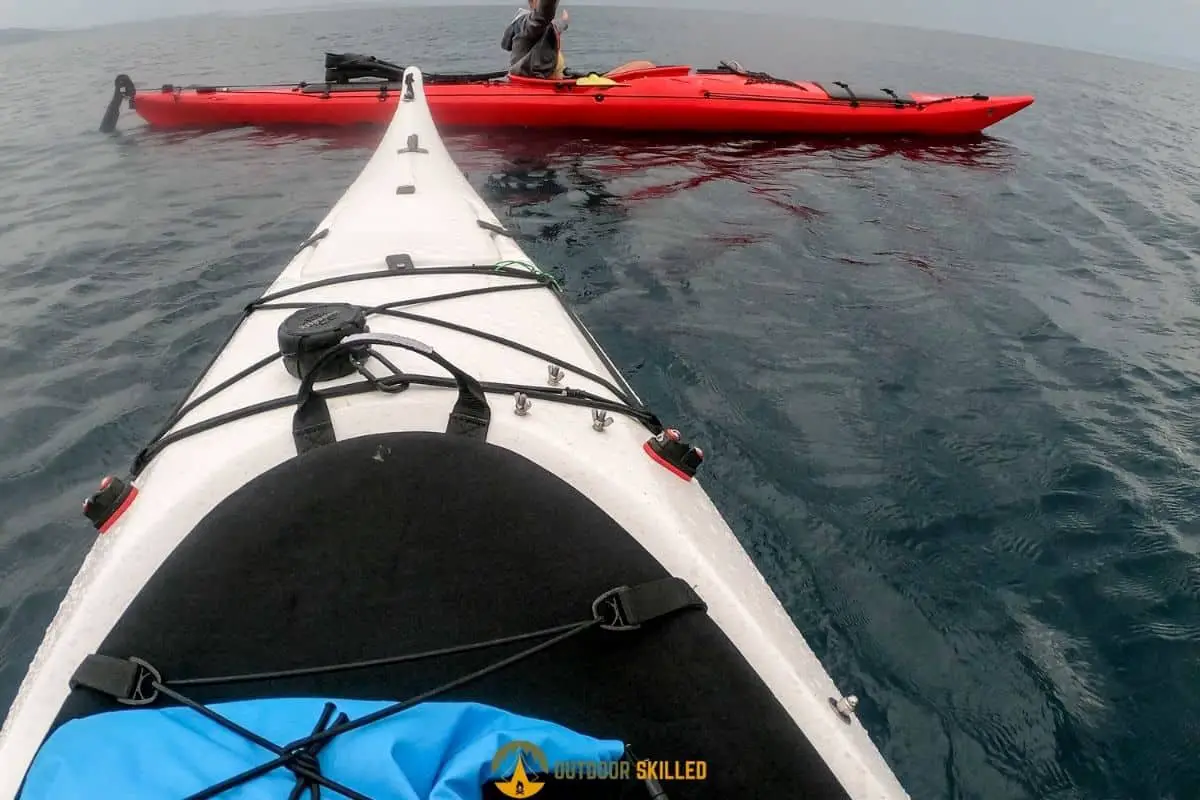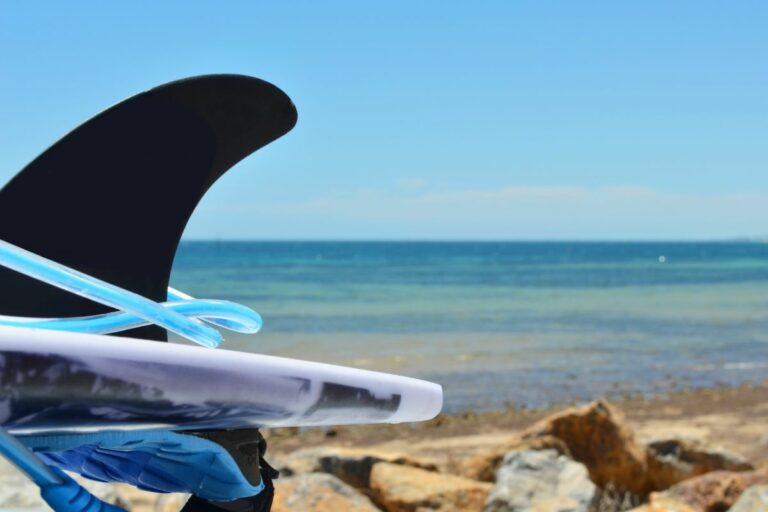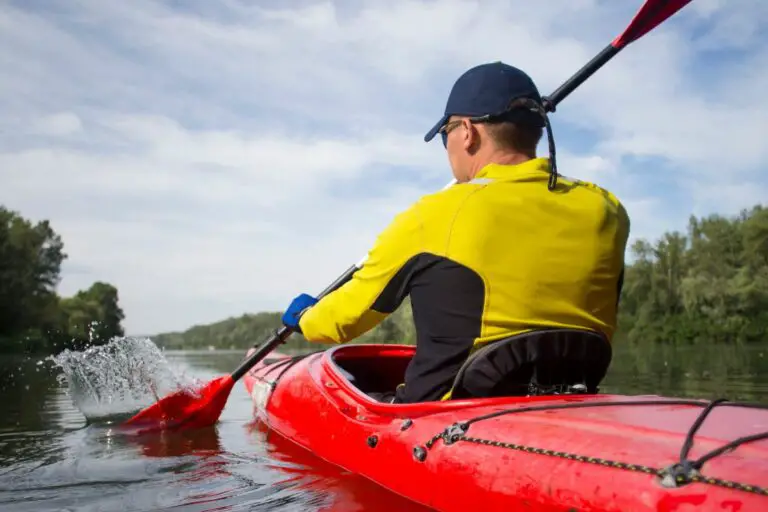What Does It Mean For A Kayak To Track Well?
The term tracking is often used in the kayaking community. It’s normal for many beginners to be unfamiliar with what tracking is and what it means for a kayak to track well.
So, what does it mean for a kayak to track well? Tracking essentially refers to how well can a kayak move in a linear direction. It is a skill that requires practice. There are several factors that can have a direct impact on the kayak’s ability to track well such as the design of the kayak as well as the kayaker’s level of experience.
Continue reading to get a better understanding of what tracking means and how you can improve your ability to track well.
If you want to upgrade your kayak but don’t want to rob a bank, you should also check out my picks for the best budget kayaks under $500 here. If you want to spend a little more, you can also get awesome value for the money with these kayaks for less than a grand here.
Table of Contents
What Does Tracking Mean?

When it comes to kayak riding, the term tracking refers to the kayak’s control settings. That means that tracking is essentially how you steer your kayak in a way which ensures it’s moving straight or in a linear direction.
Several factors can affect the ability of the kayak to track well which can cause some problems for inexperienced kayakers.
What Are the Factors That Affect Tracking?
There are some factors that are related to the way the kayak itself is designed such as the size and length of its hull. Some factors are related to the kayak’s condition – whether it’s defective or damaged.
There are other factors that are more related to the kayaker’s experience and skill such as the paddling technique and the body posture.
Now, let’s break down how each factor affects tracking in more detail.
What Is the Effect of a Kayak’s Design On It Tracking?
There are some kayaks that are built to track well while other kayaks are built to have better maneuverability.
The main design feature that plays a huge role in how well a kayak can track is the length of the hull.
Kayaks that are designed with longer hulls can track better. However, they will be lacking when it comes to maneuverability which makes turning the kayak to one side when you want very difficult. On the other hand, kayaks that are designed with a shorter hull are more suitable for performing maneuvers like skidding and carving.
For a beginner, a kayak with a longer hull can make it much easier to track well. But an experienced kayaker can make a shorter kayak track well with proper technique.
Other features that can affect tracking are add-on devices like rudders or a skegs.
A rudder is basically a moveable fin that drops down the back of that kayak which can be used to help you with steering. They are controlled with foot pedals in most kayaks. However, in kayaks that are powered by pedaling they’re controlled using a handle instead.
The rudder is mostly used as aid to keeping a kayak on track. It can be more of a disadvantage if you’re using it all of the time to turn or to maneuver because you would focus more on fussing with it instead of learning how to properly maneuver your kayak with other techniques.
Smaller kayaks do not usually come with a rudder while longer kayaks either come with a built in rudder, or you can purchase one to add. Keep in mind when purchasing a rudder for your kayak that they can be considerably expensive.
A skeg, on the other hand, extends and retracts from the bottom of the kayak. It acts in a way similar to an anchor. However, it does not hold your kayak in one spot, instead it only anchors the stern of your kayak into the water.
Most kayaks also do not usually come with a skeg, but you can purchase one and just easily attach it to the bottom of your kayak. They’re a lot cheaper compared to rudders.
The main difference between a skeg and a rudder is that a rudder can be moved and direct your kayak while a skeg doesn’t actually move a weight that helps keep your kayak on track. Most skegs have only two positions – extended and retracted meaning in use and not in use.
What Is the Effect of a Kayak’s Condition On Its Tracking?
Old kayaks will have some degree of damage that comes from being used. Shallow cuts and small scrapes won’t really affect the ability of your kayak to track well. However, you should be wary of larger scrapes and deeper dents as these can cause your kayak to track badly because they change the way the water flows against the bottom of the kayak.
Make sure to properly maintain your kayak and to regularly check it for any signs of damage in order to be able to make repairs accordingly.
What Is the Effect of a Kayaker’s Experience On Tracking?
A kayaker that has more skill can easily make a kayak of any hull length track well. With more experience, you’ll be able to figure out exactly how to maneuver your kayak and get it to do what you want.
That’s why it’s important to learn the proper paddle technique and body posture to improve your tracking skill.
How Can You Improve Your Tracking?
In order to improve your kayaking skill, you need to be aware of what are the reasons behind not tracking well.
The main problem is your paddling technique which is affected by the type and size of your paddle, how you’re handling your paddle and how you’re executing your strokes.
Let’s take a look at some quick and easy fixes to help you track better.
How to Improve Your Paddling Technique?
Here are pro tips that you can follow:
- Choose the suitable type and size of paddle blades – It’s recommended to go for shorter paddles and feather blades. This combination is the most ideal for beginners.
- Practice the correct grip on your paddle – Maintain the paddler’s box position by keeping your hands a shoulder-width apart on the paddle and bending your elbows at a 90-degree angle.
- Avoid relying on your dominant hand only – try to apply equal amounts of force using both of your hands. Since your dominant hand is stronger, it can dictate the direction of your kayak and prevent it from going straight.
- Match your paddle strokes on both sides of the kayak – Make sure your paddle is sweeping the water at the same distance from the kayak on each side and that it’s also hitting the water with the same amount of force and not dipping deeper on one side.
- Learn how to execute different paddle strokes – There are different paddle strokes that kayakers use to achieve different goals. Focus on perfecting all kinds of strokes to be able to steer your kayak better.
The next problem is maintaining a proper body posture while paddling as it can affect your paddling technique as well as your tracking.
How to Improve Your Body Posture?
Here are some pro tips you can follow:
- keep your body in an upright position – Your spine needs to be straight while your shoulders and stomach are more relaxed.
- Rely on using your core muscles to power your stroke – This will help you avoid getting fatigued quickly and reduce the risk of injury. You can also rely on the muscles in your shoulders and arms for extra support.
- Distribute your weight evenly – Learn to rotate your hips to be able to shift your weight better and avoid putting more pressure on one side.
- Bend your legs to improve balance – This will help you rotate your upper body better and give your arms more freedom to paddle efficiently.
You can also check out this simple video on how to sit properly in a kayak;
How Can You Test If Your Kayak Tracks Well?
It’s important to test a kayak for any defects before buying by taking it out for a test drive. You also need to check older kayaks for any damage from use by turning your it upside down and checking the bottom for any deep cuts or scratches.
Another way to test your kayak is to take it out in shallow water and walk alongside it until the water is almost hip deep. Give your kayak a small push and check how it moves. If it leans to one side that means it is damaged.
To learn even more about Kayak tracking, you can check out my guide to what makes a kayak track straight here.
Related Questions
What are the different types of paddle blades?
The three main types of blades are feather blades, asymmetrical blades, and curved blades. Feather blades are the most common with beginners as they’re easier to use. Asymmetrical blades can help with tracking straight while curved blades offer a more powerful stroke.
What Does the Term Weathercocking Mean When It Comes to Kayaking?
The term weathercocking refers to the kayak’s tendency to go off track when there’s wind. This is usually caused by the difference in pressure between the bow and stern of the kayak. There are tools that can help combat the wind and keep the kayak straight such as rudders and skegs.
Helpful Resources
Canoe posture characteristics in men’s 500 m canoeing
If you like this article, please share it or pin it, you can find the share buttons below. We will really appreciate it ❤️


![Which Is Easier: Canoeing Or Kayaking? [Pros & Cons]](https://outdoorskilled.com/wp-content/uploads/2021/11/canoe-vs-kayak-768x512.jpg)

![The 5 Best Motorized Kayaks in 2023 – [for Every Budget]](https://outdoorskilled.com/wp-content/uploads/2021/07/best-motorized-kayaks-featured-768x512.jpg)



